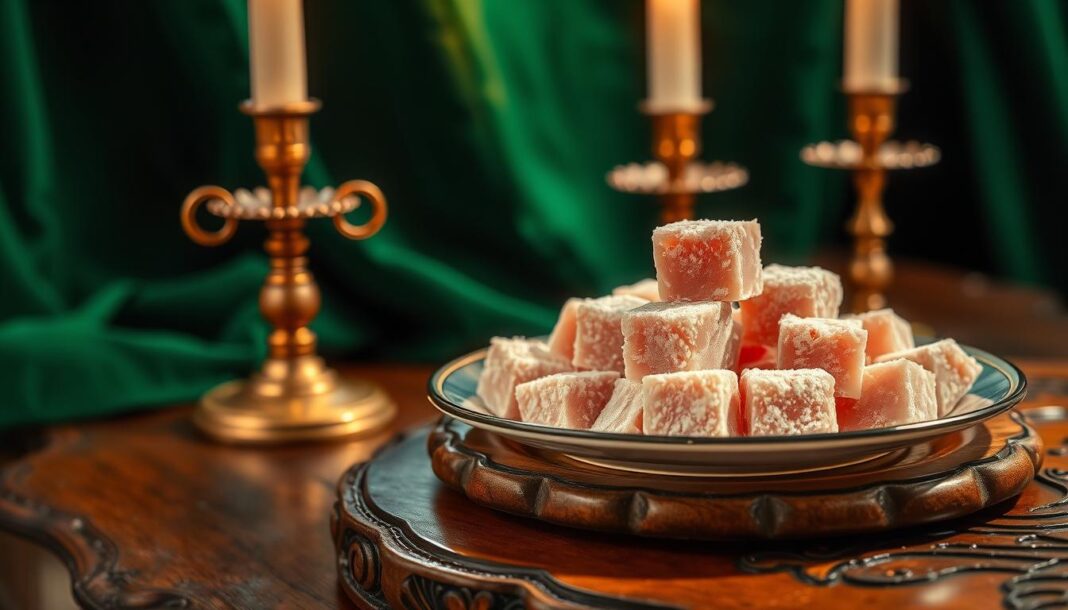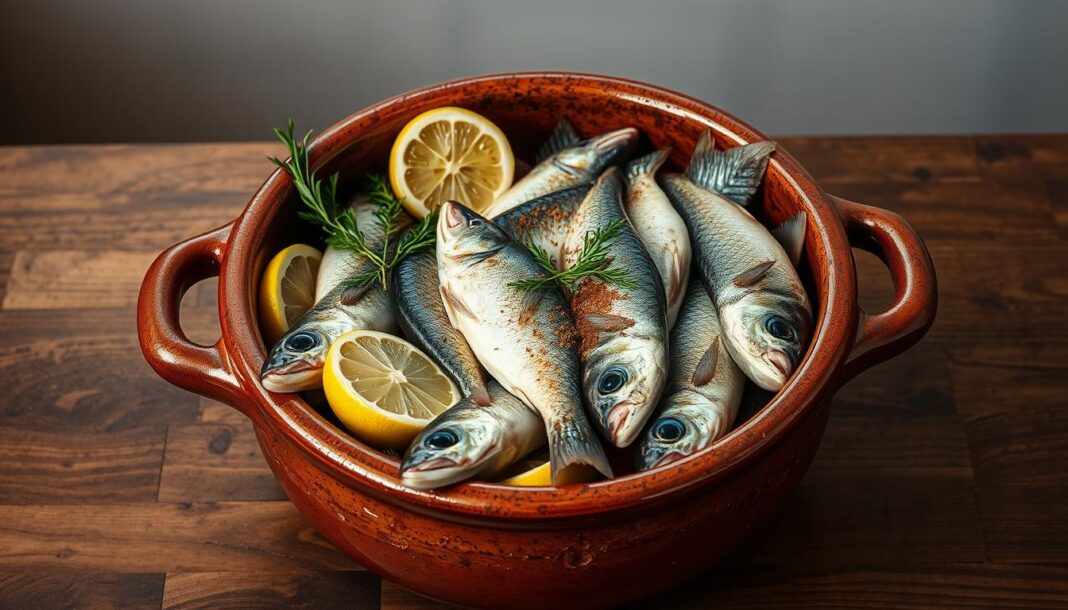In C.S. Lewis’s timeless classic, “The Lion, The Witch and The Wardrobe,” the White Witch tempts Edmund with enchanted Turkish Delight, drawing him into a world of wonder and danger. This gummy treat, originating from Turkey, has captivated audiences for centuries with its unique texture, somewhere between gumdrops and Jell-O.
We will guide you through the history and science behind this beloved candy, providing a step-by-step recipe to create authentic Turkish Delight at home. Our comprehensive guide balances traditional methods with accessible ingredients, ensuring you can recreate this Narnian treat with ease.
Key Takeaways
- Discover the historical significance of Turkish Delight in culinary traditions.
- Learn the science behind achieving the perfect gel-like consistency.
- Follow our tested recipe to create authentic Turkish Delight at home.
- Explore the cultural impact of Turkish Delight in literature and beyond.
- Understand the importance of ingredient selection for an authentic taste.
The Enchanting World of Narnia’s Turkish Delight
In the enchanting world of Narnia, Turkish Delight is a confectionery that has become synonymous with the magic and mystery of the land. This sweet treat, introduced in C.S. Lewis’s “The Lion, The Witch and The Wardrobe,” has captivated the imagination of readers and viewers, becoming an integral part of the Narnia experience.
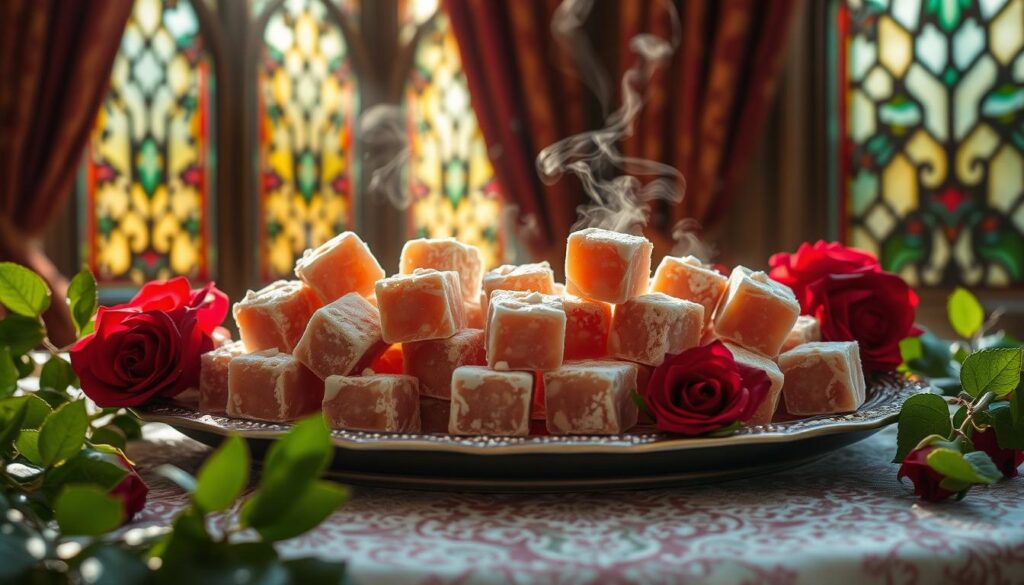
Edmund’s Temptation in The Lion, The Witch and The Wardrobe
The White Witch’s use of Turkish Delight to tempt Edmund Pevensie is a pivotal moment in the story, showcasing the candy’s power to entice and corrupt. As Poor Skandar noted, “he had to eat a ton of it! That was CRAZY, on how they made him eat all that sugar just like that!” This scene highlights the enchanting quality of Turkish Delight, making it a crucial element in the narrative.
Why Turkish Delight Captivated Readers and Viewers
So, why did Turkish Delight captivate audiences so thoroughly? The exotic nature of this Middle Eastern food made it the perfect mysterious treat for C.S. Lewis to use in his fantasy world. The vivid descriptions in the book created a sensory experience, leaving readers wondering what this magical candy might taste like. The 2005 film adaptation renewed interest in Turkish Delight, causing many to seek out or make this traditional confection. We explore how food memories and literary associations create powerful connections, making Turkish Delight a cultural touchstone beyond its culinary merits.
- The mysterious allure of Turkish Delight captivated Western readers who may have never encountered this Middle Eastern confection.
- The exotic nature of Turkish Delight made it perfect for C.S. Lewis’s fantasy world.
- Vivid descriptions in the book created a sensory experience, leaving readers curious about the taste of this magical candy.
The History and Science Behind Turkish Delight
Behind the shimmering surface of Turkish Delight lies a complex interplay of sugar, water, and starch that creates its signature texture. This confectionery masterpiece has a rich history that spans centuries, originating from Turkey and captivating the hearts (and taste buds) of people around the world.
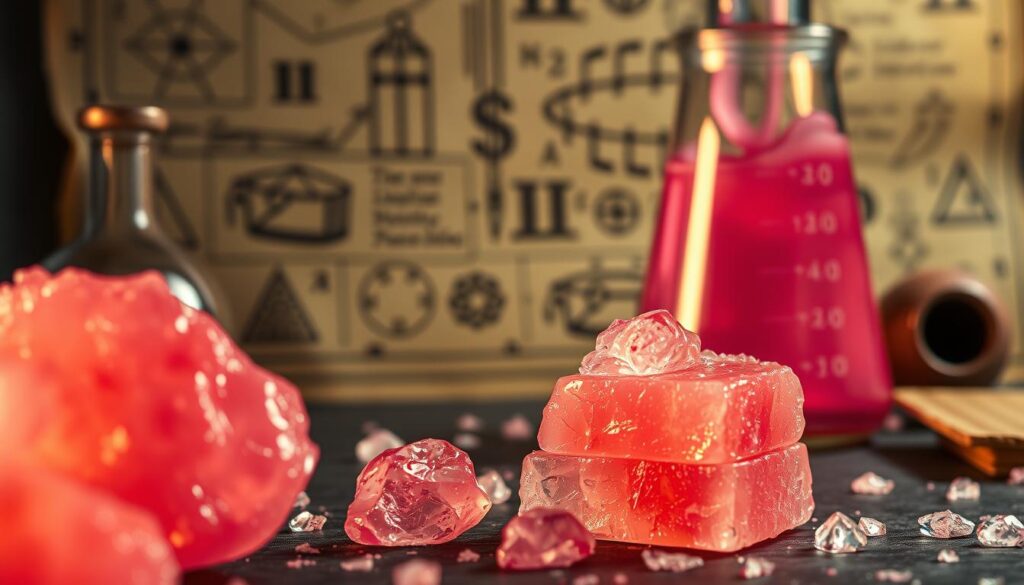
Origins of Lokum in Turkey
Turkish Delight, or Lokum, has its roots deeply embedded in the history of Turkey. The confectionery’s origins date back to the Ottoman Empire, where it was first crafted using a mixture of sugar and starch. For those interested in exploring more about Turkish Delight, The Mediterranean Dish provides an excellent overview of its history and cultural significance.
The precise ratio of water to sugar is crucial in creating the supersaturated solution that forms the gel matrix characteristic of Turkish Delight. This traditional treat has been a staple in Turkish cuisine for centuries, with its unique texture being a major factor in its enduring popularity.
The Chemistry of the Perfect Gel Texture
The chemistry behind Turkish Delight’s gel texture is fascinating. It involves the process of gelatinization, where cornstarch molecules absorb water and expand under heat. This process transforms the mixture into a gel-like state, creating the confectionery’s distinctive texture.
- The gelatinization process is critical, as it allows the starch granules to swell and create the characteristic chewy texture of Turkish Delight.
- Achieving the soft ball stage (250°F) is a crucial moment in the preparation process, as it represents the perfect sugar concentration for Turkish Delight.
- The cooling process is equally important, as it allows the mixture to set properly, with sugar molecules arranging themselves in a specific pattern for optimal texture.
For a deeper dive into how Turkish Delight gained fame through its appearance in “The Lion, The Witch and The Wardrobe,” visit Historical Foods to explore the cultural and literary significance of this confectionery.
Authentic Turkish Delight Recipe Narnia Style
Embark on a culinary adventure with our authentic Turkish Delight recipe, inspired by the magical land of Narnia. This traditional confection, steeped in history and mystique, is now within your reach to create and enjoy. For more insights into the historical context of Turkish Delight, visit our page on Edmund’s Narnia Turkish Delight.

Ingredients You’ll Need
To create this enchanting treat, you’ll need the following ingredients: sugar, citric acid, water, and cornstarch. The quality of these ingredients is crucial, as they directly impact the final texture and flavor of your Turkish Delight. Specifically, you’ll need:
- 1 cup granulated sugar
- 1½ cups water
- 1 cup + 2 tablespoons cornstarch
- 4 cups + 10 teaspoons water (for the slurry)
- Citric acid (as specified in the recipe)
Ensuring you have these ingredients in the right proportions is key to achieving the perfect Turkish Delight.
Equipment Essentials
The right equipment is essential for successfully making Turkish Delight. You’ll need a heavy pot, a candy thermometer, a large jar for mixing the slurry, and a whisk for constant stirring. A well-prepared workspace will make the process smoother and more enjoyable.
Step-by-Step Preparation Method
Now, let’s dive into the preparation method. Start by combining the sugar, citric acid, and 1½ cups of water in a heavy pot over medium-high heat. Whisk until the sugar is completely dissolved, then bring the mixture to a rolling boil. Use a candy thermometer to monitor the temperature until it reaches 250°F, or the soft ball stage.
Meanwhile, mix 4 cups + 10 teaspoons of water with 1 cup + 2 tablespoons of cornstarch in a large jar to create a slurry. Slowly pour this slurry into the syrup, whisking constantly to avoid bubbles. This step is crucial for achieving the right consistency.
The cooking time is approximately 45-60 minutes, during which you’ll need to be patient and attentive. Once the mixture has reached the perfect consistency, pour it into a prepared surface and let it set at room temperature for 5-10 hours.
After the Turkish Delight has set, cut it into desired shapes and coat it in a traditional powdered sugar and cornstarch mixture for that authentic finish.
Secrets for Turkish Delight Success
Turkish Delight success is not just about following a recipe, but mastering its intricacies. To create this confectionery masterpiece, one must understand the critical factors that contribute to its signature texture and flavor.
Common Mistakes to Avoid
One of the top mistakes when making Turkish Delight is not achieving the right gel texture. This can be due to incorrect temperature control or insufficient cooking time.
Another common error is not using the correct ratio of sugar to cornstarch when coating the delights. We recommend a 2:1 ratio of powdered sugar to cornstarch to prevent stickiness while maintaining a soft interior.
Storage and Serving Suggestions
To keep your Turkish Delight fresh, store it in an airtight container filled with a mixture of powdered sugar and cornstarch. Bury the delights in this mixture to maintain their texture. It’s best to consume them within 72 hours for optimal flavor and texture.
For serving, consider presenting your Turkish Delight on ornate platters or in decorative boxes, reminiscent of the White Witch’s offerings in Narnia. Pair it with a warm beverage, like tea or coffee, to enhance the experience. 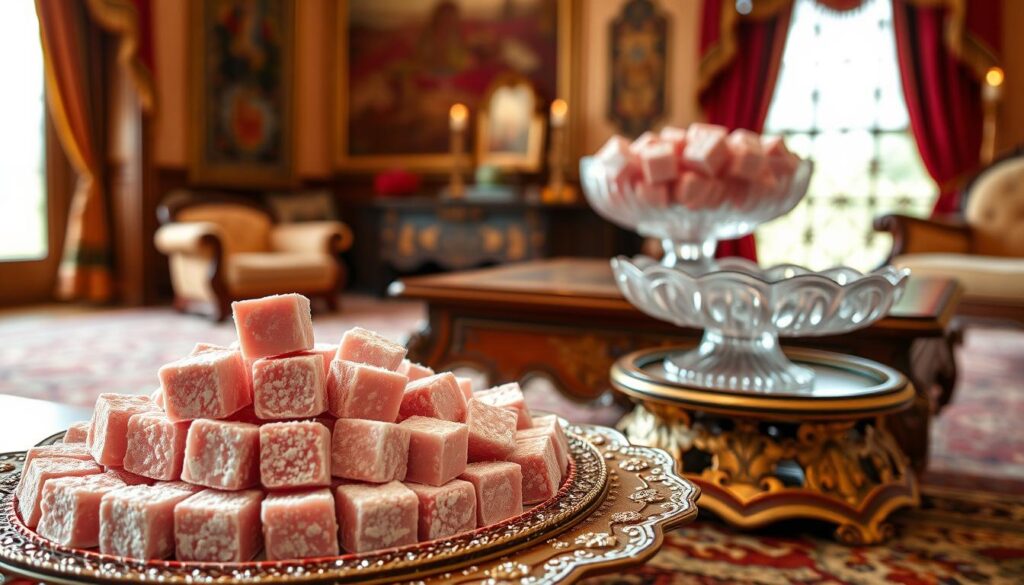
By avoiding common mistakes and following proper storage and serving techniques, you’ll be able to enjoy your homemade Turkish Delight at its best.
Conclusion
We’ve concluded our journey into making Turkish Delight, a magical candy from Narnia.
Mastering this recipe connects us to literary history and centuries of confectionery tradition.
We encourage you to share your recipe variations and experiences on our website at Historical Foods, building a community of Narnia-inspired home confectioners.
This traditional food brings fictional worlds to life, enriching our experience of beloved stories.
Enjoy your delicious homemade delight, and don’t be afraid to experiment with new flavors and recipes.
